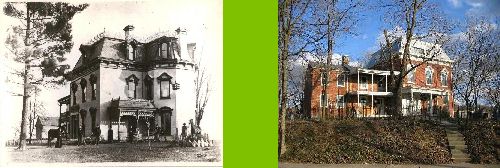
If I put polyurethane over it it will look like this only more glossy. This floor looks good but not in this house. It looks too new. This is the floor you would expect to see in a new home or a rehabbed one in a historic district where they advertise "beautiful" hardwood floors. I could do what many people do, buy another stain color or two and mix it until the wood is the proper color and then cover it with the "plastic" layer of poly. That doesn't solve the problem though. The floor would still look new and I want it to look like it has always been there. How will I do that? Amber shellac! I will still use polyurethane as the final coat because this is a bathroom but I am going to use the poly to protect the shellac. I am using the shellac like it is a topical stain.
I am posting this now because the timing is appropriate and because I haven't done the work yet so there is no "after" picture to show off. I can't tell you how great my floor looks after messing with it a gazillion times until it came out right. You see, I already know how the floor will turn out. I did one just like it last year in the hallway upstairs. I will be applying three or four coats of shellac and two coats of semi-gloss polyurethane. Then I do the super fine steel wool and beeswax treatment. When done, I predict this floor will look like it has been here 50 years, without the dings of course. So, unless I spill the can of shellac, I will post a picture of this floor again within a week when it is done. If I spill the shellac I will post a picture sooner and post about how not to refinish a floor and put in a paragraph about how to remove shellac stains from your clothes!




























